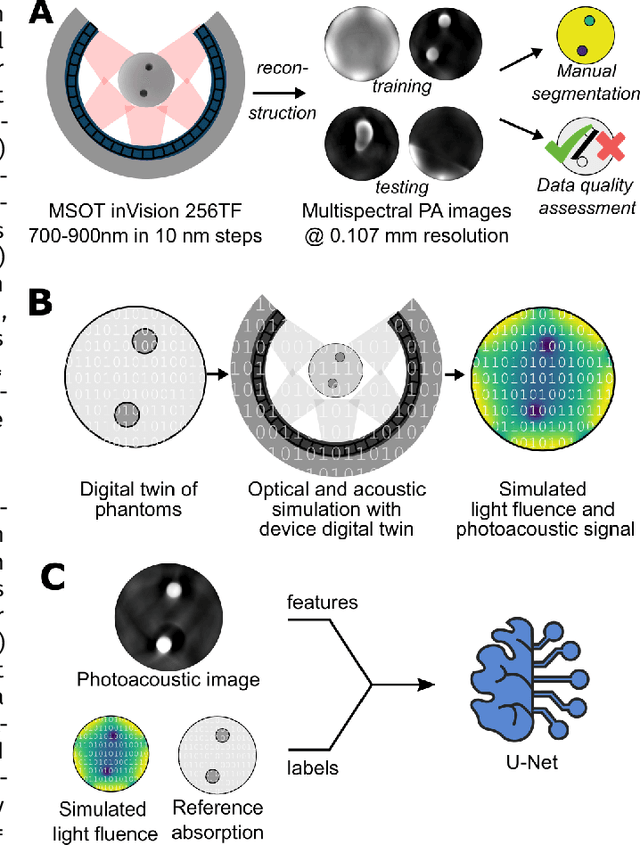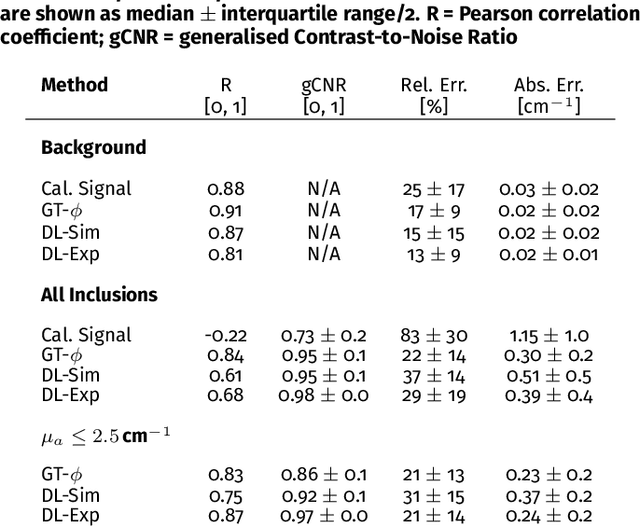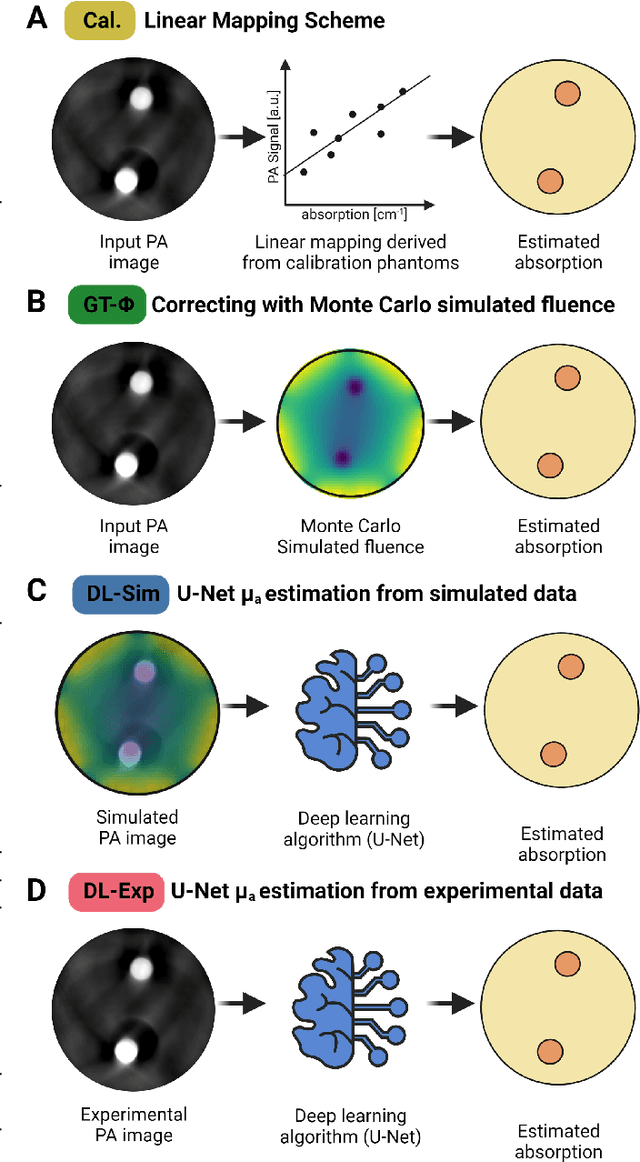Sarah E. Bohndiek
Hyperpixels: Pixel Filter Arrays of Multivariate Optical Elements for Optimized Spectral Imaging
Mar 25, 2024



Abstract:We introduce the concept of `hyperpixels' in which each element of a pixel filter array (suitable for CMOS image sensor integration) has a spectral transmission tailored to a target spectral component expected in application-specific scenes. These are analogous to arrays of multivariate optical elements that could be used for sensing specific analytes. Spectral tailoring is achieved by engineering the heights of multiple sub-pixel Fabry-Perot resonators that cover each pixel area. We first present a design approach for hyperpixels, based on a matched filter concept and, as an exemplar, design a set of 4 hyperpixels tailored to optimally discriminate between 4 spectral reflectance targets. Next, we fabricate repeating 2x2 pixel filter arrays of these designs, alongside repeating 2x2 arrays of an optimal bandpass filters, perform both spectral and imaging characterization. Experimentally measured hyperpixel transmission spectra show a 2.4x reduction in unmixing matrix condition number (p=0.031) compared to the optimal band-pass set. Imaging experiments using the filter arrays with a monochrome sensor achieve a 3.47x reduction in unmixing matrix condition number (p=0.020) compared to the optimal band-pass set. This demonstrates the utility of the hyperpixel approach and shows its superiority even over the optimal bandpass case. We expect that with further improvements in design and fabrication processes increased performance may be obtained. Because the hyperpixels are straightforward to customize, fabricate and can be placed atop monochrome sensors, this approach is highly versatile and could be adapted to a wide range of real-time imaging applications which are limited by low SNR including micro-endoscopy, capsule endoscopy, industrial inspection and machine vision.
Distribution-informed and wavelength-flexible data-driven photoacoustic oximetry
Mar 21, 2024Abstract:Significance: Photoacoustic imaging (PAI) promises to measure spatially-resolved blood oxygen saturation, but suffers from a lack of accurate and robust spectral unmixing methods to deliver on this promise. Accurate blood oxygenation estimation could have important clinical applications, from cancer detection to quantifying inflammation. Aim: This study addresses the inflexibility of existing data-driven methods for estimating blood oxygenation in PAI by introducing a recurrent neural network architecture. Approach: We created 25 simulated training dataset variations to assess neural network performance. We used a long short-term memory network to implement a wavelength-flexible network architecture and proposed the Jensen-Shannon divergence to predict the most suitable training dataset. Results: The network architecture can handle arbitrary input wavelengths and outperforms linear unmixing and the previously proposed learned spectral decolouring method. Small changes in the training data significantly affect the accuracy of our method, but we find that the Jensen-Shannon divergence correlates with the estimation error and is thus suitable for predicting the most appropriate training datasets for any given application. Conclusions: A flexible data-driven network architecture combined with the Jensen-Shannon Divergence to predict the best training data set provides a promising direction that might enable robust data-driven photoacoustic oximetry for clinical use cases.
Moving beyond simulation: data-driven quantitative photoacoustic imaging using tissue-mimicking phantoms
Jun 11, 2023



Abstract:Accurate measurement of optical absorption coefficients from photoacoustic imaging (PAI) data would enable direct mapping of molecular concentrations, providing vital clinical insight. The ill-posed nature of the problem of absorption coefficient recovery has prohibited PAI from achieving this goal in living systems due to the domain gap between simulation and experiment. To bridge this gap, we introduce a collection of experimentally well-characterised imaging phantoms and their digital twins. This first-of-a-kind phantom data set enables supervised training of a U-Net on experimental data for pixel-wise estimation of absorption coefficients. We show that training on simulated data results in artefacts and biases in the estimates, reinforcing the existence of a domain gap between simulation and experiment. Training on experimentally acquired data, however, yielded more accurate and robust estimates of optical absorption coefficients. We compare the results to fluence correction with a Monte Carlo model from reference optical properties of the materials, which yields a quantification error of approximately 20%. Application of the trained U-Nets to a blood flow phantom demonstrated spectral biases when training on simulated data, while application to a mouse model highlighted the ability of both learning-based approaches to recover the depth-dependent loss of signal intensity. We demonstrate that training on experimental phantoms can restore the correlation of signal amplitudes measured in depth. While the absolute quantification error remains high and further improvements are needed, our results highlight the promise of deep learning to advance quantitative PAI.
 Add to Chrome
Add to Chrome Add to Firefox
Add to Firefox Add to Edge
Add to Edge